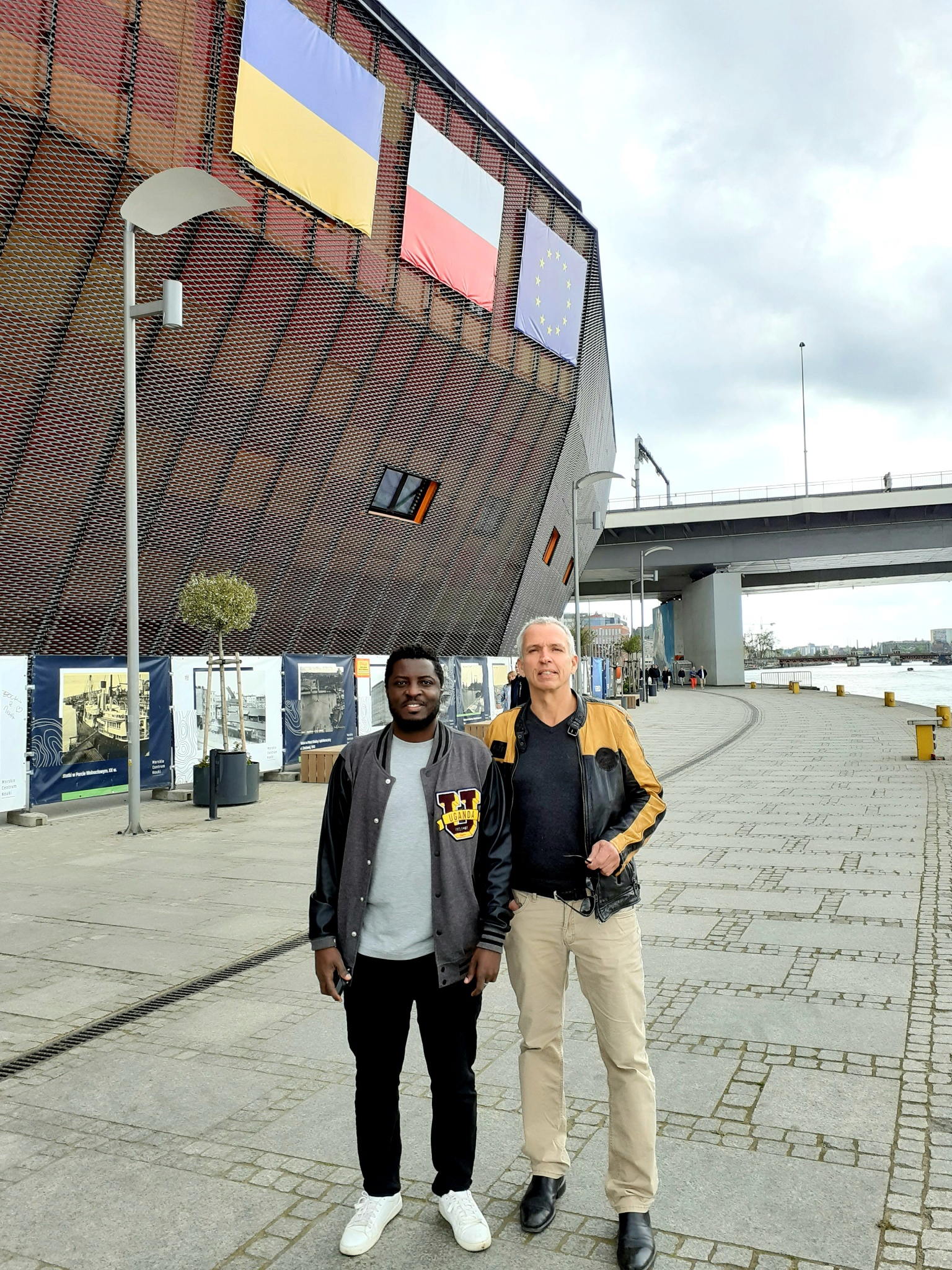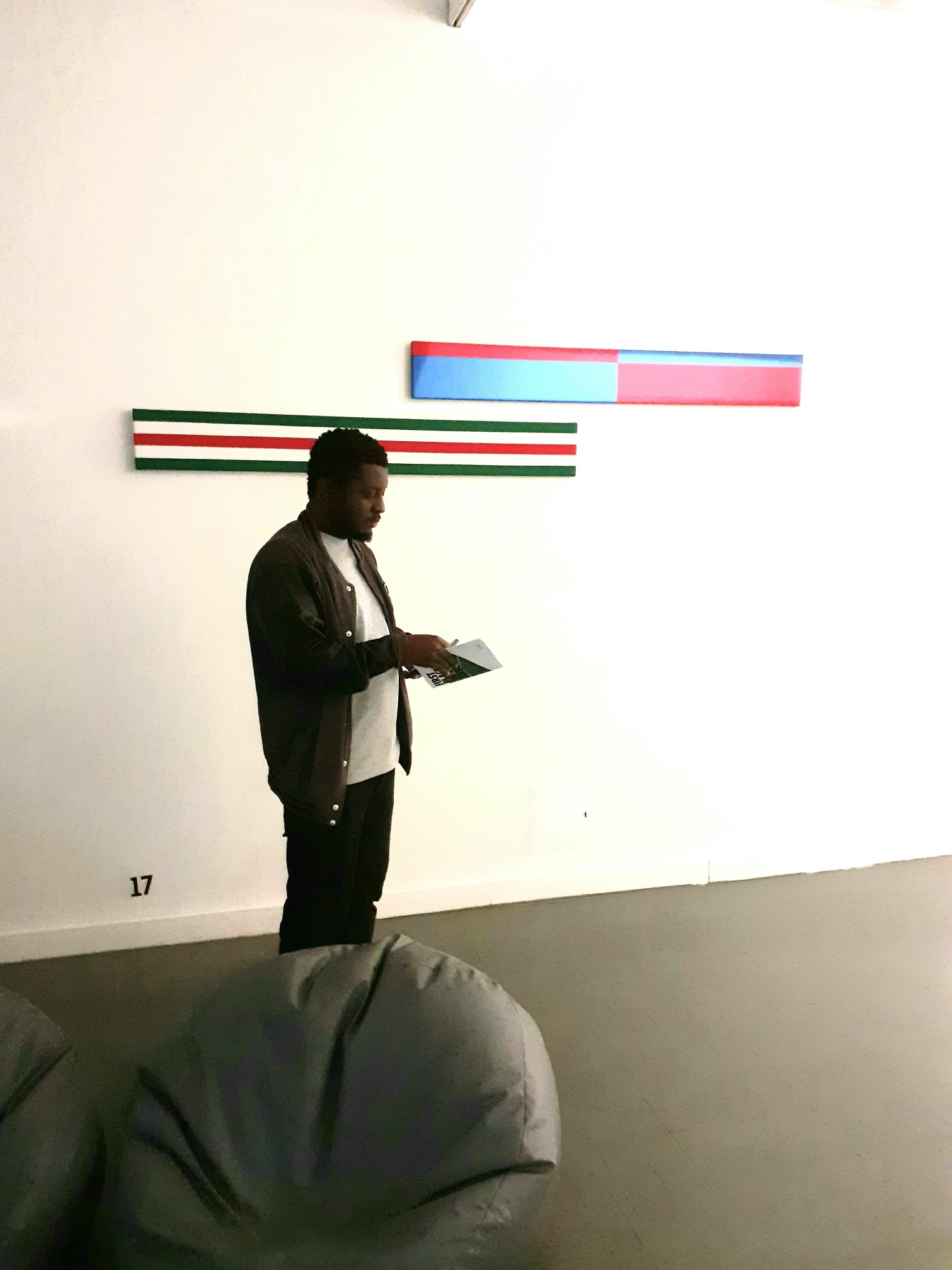Fresh from the Ugandan Pavillion’s triumphant opening at the 59th Biennale di Venzia, featured artist Collin Sekajugo made a trip to Szczecin, Poland, to meet with TPAAE researchers and curators. Marlena Chybowska-Butler [MCB] of the National Museum in Szczecin [NMS] hosted the collage maker over the May 3rd national holiday, guiding a tour that encompassed a visit to the city-run TRAFO Art Gallery and walks through Łasztownia island, the Wały Chrobrego embankment and the Jasne Blonia park in the city center. Sekajugo also met with DUOS Festival curator Łukasz Jastrubczak from Akademia Sztuki w Szczecinie and Ewa Prądzyńska from the NMS to explore avenues of future cooperation.
Among them, exchanges and residencies, including the Camp Ndegeya sculpture garden that Sekajugo has created in Masaka, a city located some 130 kms from the Ugandan capital of Kampala. Sekajugo, whose mixed-media works enjoy places in international collections and institutions, acquired the 10-acre parcel with the proceeds of his primarily international sales. Along with the Masaka Gallery he operates in the city, Sekajugo offers residencies that see artists from Africa and elsewhere create permanent contributions to the site in return for their stays.
TPAAE researchers learned of Sekajugo’s sculpture garden during conversations with Kenyan artists at the Circle Gallery in Nairobi during their 2022 secondments. The artist also knows well Anne Mwiti from project partner Kenyatta University, when the pair became acquainted during Sekajugo’s residency at Nairobi’s Kuona Trust arts centre. What’s more, his pioneering work in Rwanda led to the establishment of the Ivuka Arts Centre, provides young artists access to studio space and materials, in the capital city of Kigali in 2007. Works that raise awareness about inequality and inequity in Ugandan society earned him a Human Rights Award from Chapter Four Uganda in 2019.
The self-taught painter whose practice has evolved to comprise photography, print making and applique in the creation of works that portray the realities of life in East Africa is paired with sculptor Acaye Kerunen in Venice. Underwritten by their London-based manager, the exhibition curated by Tanzanian artist and critic Shaheen Merali earned special mention from Biennale organizers. MCB became acquainted with Sekajugo and Kerunen during the preview arranged for industry professionals and journalists. And Sekajugo accepted her invitation to Szczecin for a closer look at the local art scene.
Along with a visit to the TRAFO art gallery and a tour of the city, MCB hosted a dinner for Sekajugo with TPAAE colleagues. Prądzynska, Jastrubczak and filmmaker Małgorzata Mazur, who participated in the first DUOS Festival in Kilifi in 2020, discussed artistic trends and developments in Uganda. The artist also opened the door for artists from Poland to the residency programme in Masaka. The group assessed the prospects for future cooperation, including thematic research initiatives and the potential for adding Ugandan objects and works to the NMS ethnographic collection of African art, which is the largest in Poland. Sekajugo extended invitations to his Kampala base and Camp Ndegeya to TPAAE researchers and participants during the project’s remaining secondments.



